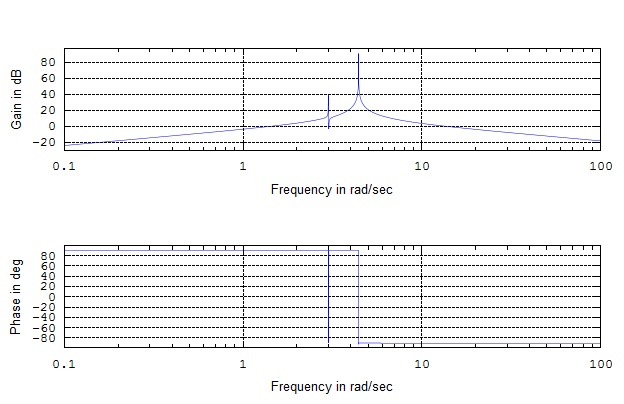Problem
A simple pendulum with a length L = 0.5m is pulled back and released from an initial angle  . Then it is run with a forcing function of cos(3
. Then it is run with a forcing function of cos(3 ) Find an equation that gives the angle of the pendulum at any given time t.
) Find an equation that gives the angle of the pendulum at any given time t.
Solution
Assuming no damping and a small angle( ), the equation for the motion of a simple pendulum can be written as
), the equation for the motion of a simple pendulum can be written as

Substituting values we get


Remember the identities


Now we can take the Laplace Transform to change the second order differential equation, from the t domain, into a simple linear equation, from the s domain, that's much easier to work with



Since we know that  and the initial velocity
and the initial velocity  we get
we get











Now we can take the inverse Laplace Transform to convert our equation back into the time domain

This will give us the angle (in degrees) of the pendulum at any given time t.
Initial Value Theorem
We can use the Initial Value Theorem as a check that our initial values for the problem are valid.


Below we will use this theorem to check the values for our problem.

This value  is the initial angle we gave the pendulum so it checks out.
is the initial angle we gave the pendulum so it checks out.
Final Value Theorem
We can use the Final Value Theorem as a check that our final values for the problem are valid.


Below we will use this theorem to check the values for our problem.

This is zero because the average angle as time goes to infinity will be zero (halfway between -12 and 12 degrees).
Bode Plots
To find the bode plot we use the function

Entering this into a program such as Maple, Octave, or MATLAB will give you a plot that looks like this

Asymptotes & Zeroes




























